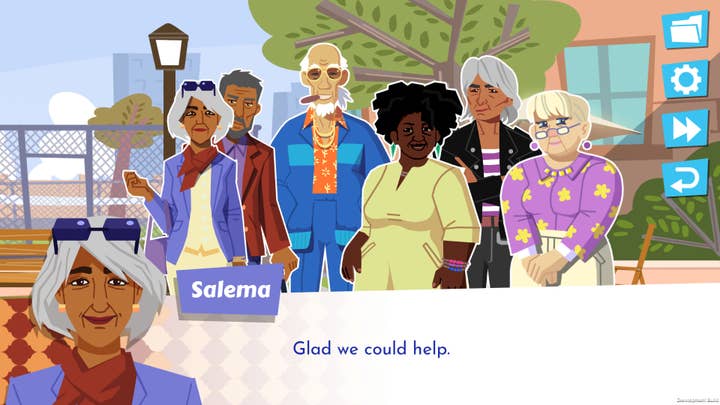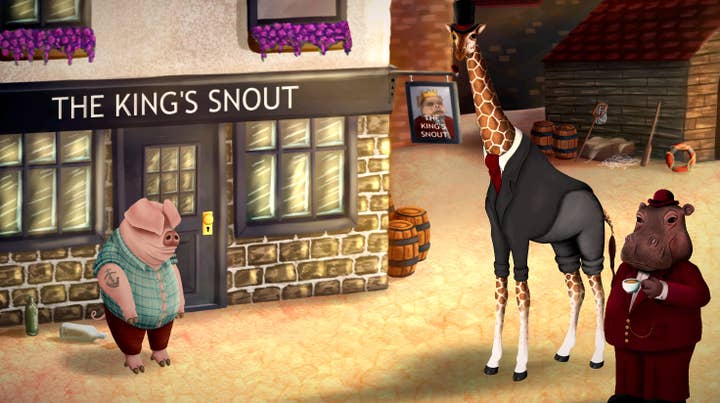Is your indie game ready for funding?
Cassia Curran explored how to conduct market analysis during her talk at the Games Industry Investment Summit Online
When starting in the industry, it's common for developers to lack a clear understanding of the market, and how their game might fare in that environment. A lot of studios struggle to find funding simply because they don't take the time to properly budget and work out a sales projection. When a potential investor comes in and crunches the numbers, they realise that profit is not possible, and it's back to square one for the developer.
Wings Interactive's CEO Cassia Curran is very familiar with that situation. Which is why she wanted to give developers some practical tips to work out if their indie game idea was ever going to get funding, in her Games Industry Investment Summit talk entitled "Is Your Indie Game Viable? How to Research the Market" (which you can rewatch on our YouTube channel and below).
"Down to its simplest, it's a matter of comparing how much your game costs to how much revenues it will return"
"So how do we avoid that situation? Down to its simplest, working out whether your indie game is viable is a matter of comparing how much it costs to make to how much revenues it will return," she said.
How to work out your budget is a topic for another time, and Curran focused on market analysis and how to work out what your revenue could be. Market analysis is fundamental to having an educated insight into games, which in turn is going to help you have insight into your own game and how it's likely going to perform.

1. Create a competitor set
The first step of your market analysis is to find who your competitors are. Having this competitor set will help you figure out where your game is located in the indie ecosystem.
"If you're making a racing game then you know racing games, you played a lot of racing games, but it's always good to check through all the racing games that have come out, especially in the last year or two," Curran said. "You should focus on the most recent releases because markets move quite fast in the indie games industry. And you shouldn't just be looking at the top sellers; you want to be looking at every single game that is somewhat within your genre."
"You should focus on the most recent releases because markets move quite fast in the indie games industry"
While checking every single one might be impossible, Curran admitted, the more data you have, the more accurate and valuable the insights will be. If your game is very different from everything on the market and you're struggling to find direct comparisons, look at its potential playerbase.
"Think about the kind of player that would like your game and then base your competitor set upon what other games these players might like," Curran said. "For example, if you think your game will be liked by players who are super competitive or really into multiplayer, then look at super competitive multiplayer games, even if gameplay is different."
2. Calculate your competitors' revenues
Curran highlighted the next step as the most difficult part of the process: figuring out what kind of revenues the different games in your competitor set have earned.
"On PC and console we are pretty limited for accurate data, especially because there are so many different platforms and they're pretty fragmented," Curran said. "But your aim for revenue calculations isn't one [of] complete accuracy. You're looking for ballpark numbers. You are looking at having an error margin of 50%, but not an error margin of 10,000%. A secret for you is that everyone -- including extremely large companies in the [industry] -- when they're making a market analysis like this, use Steam Spy."
Curran rightly pointed out that Steam Spy is not what it used to be, with its accuracy having been reduced by a change to the Steam web API in 2018. But she said that it can still be worth using as a secondary data point.

"[But] what I think is worth trying right now is an updated Boxleiter method from Jake Birkett," she continued. "That theory is that roughly one in every 30 to 150 players, for the game that they bought, tend to leave a review on Steam. So that means if there are ten reviews for a game on Steam, [it] maybe sold about 300 to 1500 copies. If there's 100,000 reviews of the game, then maybe it's three to 15 million.
"So you can get ballparks. If you take the center of that ballpark then you can at least get some sort of idea about the spread of the games that you're looking at in your competitor set."
From there, you can figure out gross revenue by multiplying your estimated unit sales number by the price of the game. Getting net revenues from there is very tricky though.
"Steam, for sales under $10 million of any game, will take 30% of revenues," Curran explained. "Then you probably multiplied by US price, but then there's all these other regional prices. So if you look at Steam Database, that's a good resource for looking at what discounts or what other prices there are in different countries. It can be a lot cheaper in some countries.
"Then, you're always going to get some players returning a game or charging it back on their credit card. You're also going to have to bear in mind that a lot of the sales will not [happen] during full price time; a lot will be happening during the promotional sales. So you have to look up when those sales are and that can give you a much better estimate."

Price cuts are indeed among the most important moments of a game's lifecycle, as we recently touched upon in our Academy guide dedicated to Steam sales and pricing. So you can't underestimate that aspect for the games that are part of your competitor set.
"Another caveat to keep in mind is that this is just for Steam: if you want to figure things out for other platforms, things are much more difficult," Curan added. "My very lazy trick, which works better if you're doing a lot of games rather than just one, is that usually the net revenues on Steam is about half of the gross revenues, and then the total revenues of all the other platforms is about the same.
"But the ultimate cheat frankly after all this complex maths is just: ask the developer!"
"So actually, if you just use the Boxleither method and then multiply it by the US price for example, then that's roughly -- very roughly -- what it's going to be on for total sales of all platforms, including Steam, in my opinion.
"But the ultimate cheat frankly after all this complex maths is just: ask the developer! That's worth a try. A lot of indie developers are super nice and they will totally let you know if you ask really politely. And I often recommend saying: 'I think it's about this amount, is that correct?' and they may or may not verify it for you -- that's worth a go."
3. Analyse your competitor set
Then comes the fun part: you need to play all the different games in your competitor set and theorise about why there might be differences in sales between them. This will help you identify where your game falls in that spectrum.
"I recommend tracking everything in an Excel sheet," Curran said. "There are so many factors that will impact the sales of the game and it varies tremendously depending upon the game's genre and the kind of people who play. It's definitely worth reading a lot of player reviews for these games."

The quality of a game is obviously the most important aspect to take in consideration at this stage.
"There's a huge amount that goes into whether a game is good or not, and I will leave that up to game developers for your specific genre: find out what is the most important thing. For some genres it's really important to have beautiful artwork, for some genres nobody really cares that much, it's more about the moment-to-moment gameplay."
Curran made a list of the various success factors to take into account to figure out how your game might compare:
- The game's duration: players will complain if a game is too short, for instance.
- The game's price: Curran said that having a low price doesn't necessarily mean that more players are likely to buy your game. She pointed out that a quality game may cost a bit more. If you're wondering about pricing more generally, you can read our guide on the topic.
- Player expectation (mis)match
- Marketing: most games will need decent marketing, Curran said. Have a look at your competitors' marketing: was the publisher involved? What was their social media like? Try and figure out what kind of support they had at launch.
- Languages supported: what languages were the most popular for the reviews on Steam?
- Platform availability
- Release schedule: was it released at a busy time like Christmas?
- Think about the market as a whole: how big is that genre? How does the playerbase behave? Is it mostly live-service games? Is that market growing?
4. Work out your sales projection
You've now identified your competitors, worked out their sales, and the factors that impacted their performances. From there, you can now work out your own sales projection and whether or not your idea is viable.
"Through this rather complex exercise you should be able to have a lot of insight into why some games are successful, and why some games fail," Curran said. "And you can guess, from your own rough plans, that, if you're lucky, you'll get this high selling indie game amount. Or, if you're unlucky, that you'll get the sales of this other indie game which is similar to yours, that didn't sell very well, but is similar quality.
"So essentially, by taking these high, medium, and low projections you're working out whether your game is viable. What we often see, for example, [is] a game that is pitched to us that's asking for millions of dollars but the similar games that have released in the market [recently] made like $500,000, so that's impossible to invest.
"What developers really need to think about, especially looking for funding, is that it's not just enough to have your budget be equal to your medium sales projections. [The budget] should be a lot less so that any investors or publishers can get some sort of profit, so you can get a profit as well."
To complement her talk and the strategies she touched upon, Curran also recommended the following resources:
- Dutch Game Garden Guesstimator for Steam, which will help you budget and set goals for your game
- Steam Revenue Calculator, which does the maths behind the Boxleiter method for you
- Bylines from Jake Birkett, Danny Weinbaun, Sergio Garces on Gamasutra
- Ryan Clark's YouTube channel The Clark Tank, which analyses the Steam top 50
- Chris Zukowski's blog, How to Market a Game
- Sion Carless's newsletter, Game Discoverability Now
You can rewatch Cassia Curran's talk at the GamesIndustry.biz Investment Summit Online above or on our YouTube channel


